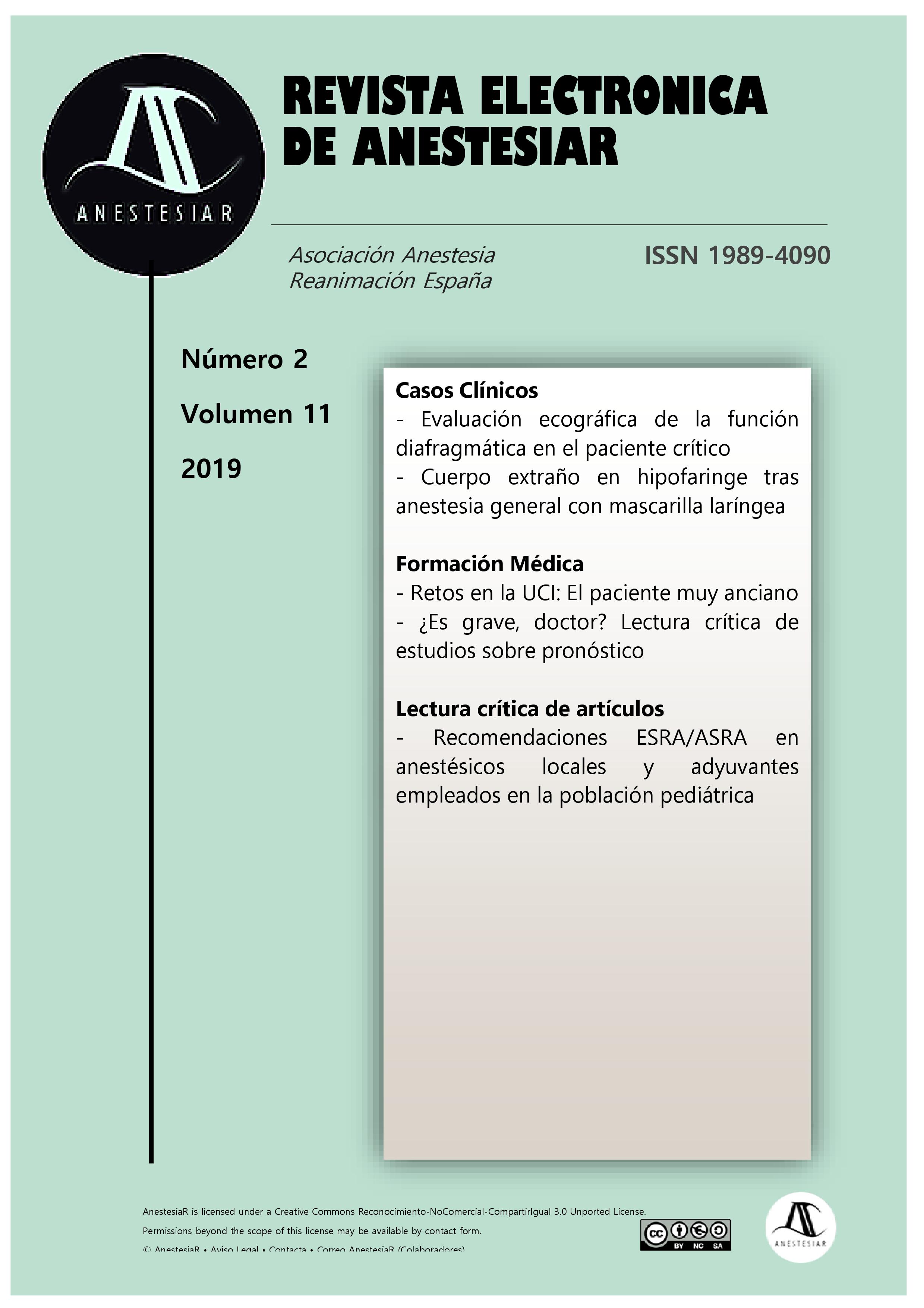Foreign body in hypopharynx after general anesthesia with laryngeal mask
DOI:
https://doi.org/10.30445/rear.v11i2.664Keywords:
Anesthesia, foreign body, airwayAbstract
13-year-old male presented to the emergency department with complaint of sore throat for five days. His anamnesis revealed orchidopexy under general anesthesia and the onset of the symptoms just in the postoperative period. The patient was admitted and the diagnosis of hypopharynx phlegmon due to airway manipulation during previous surgery was made. After 48 hours of conservative treatment there was no clinical improvement but bleeding developed. Flexible fiberoptic laryngoscopy showed a iatrogenic foreign body lodged during orchidopexy.
References
- Bosque Cebolla MD. Lesiones laríngeas postintubación endotraqueal. Factores de riesgo asociados. [Tesis Doctoral]. Barcelona: Departamento de Medicina, Facultad de Medicina, Universidad Autónoma de Barcelona; 2015.
- World Alliance for Patient Safety. WHO guidelines for safe surgery. Geneva: World Health Organization, 2009.
- WHO: World Health Organization [Internet]. Ginebra: World Health Organization; [actualizado enero 2009; citado 11 oct 2015]. Disponible en: http://apps.who.int/iris/bitstream/10665/44233/2/9789243598598_spa_Checklist.pdf
- Mellin-Olsen J, Staender S, Whitaker DK, Smith AF. The Helsinki Declaration on Patient Safety in Anaesthesiology. Eur J Anaesthesiol. 2010;27:592-7.
- Mellin-Olsen J, Pelosi P, Van Aken H. Declaración de Helsinki sobre la seguridad de los pacientes en Anestesiología. Rev Esp Anestesiol Reanim. 2010:57;594-5.
- Monedero P, Errando CL, Adame MM, Macías AI, Garutti I. La declaración de Helsinki sobre seguridad de los pacientes en anestesiología. Rev Esp Anestesiol Reanim. 2013;60(Supl.1):1-3
Downloads
Published
How to Cite
Issue
Section
License
Copyright (c) 2019 Revista Electrónica AnestesiaR

This work is licensed under a Creative Commons Attribution-ShareAlike 4.0 International License.
 Envío y derechos de autor
Envío y derechos de autor


 Revista Electrónica AnestesiaR by
Revista Electrónica AnestesiaR by 